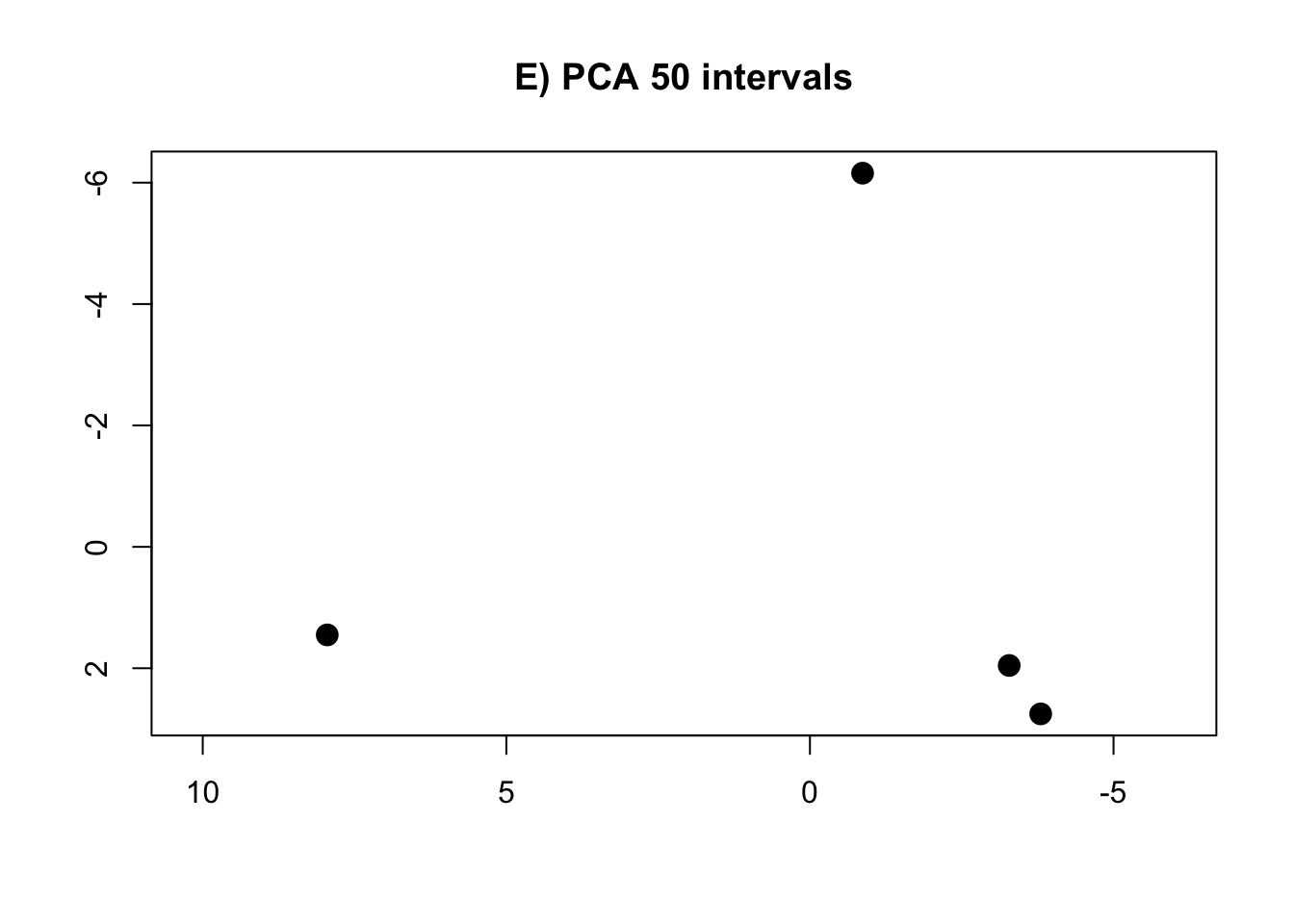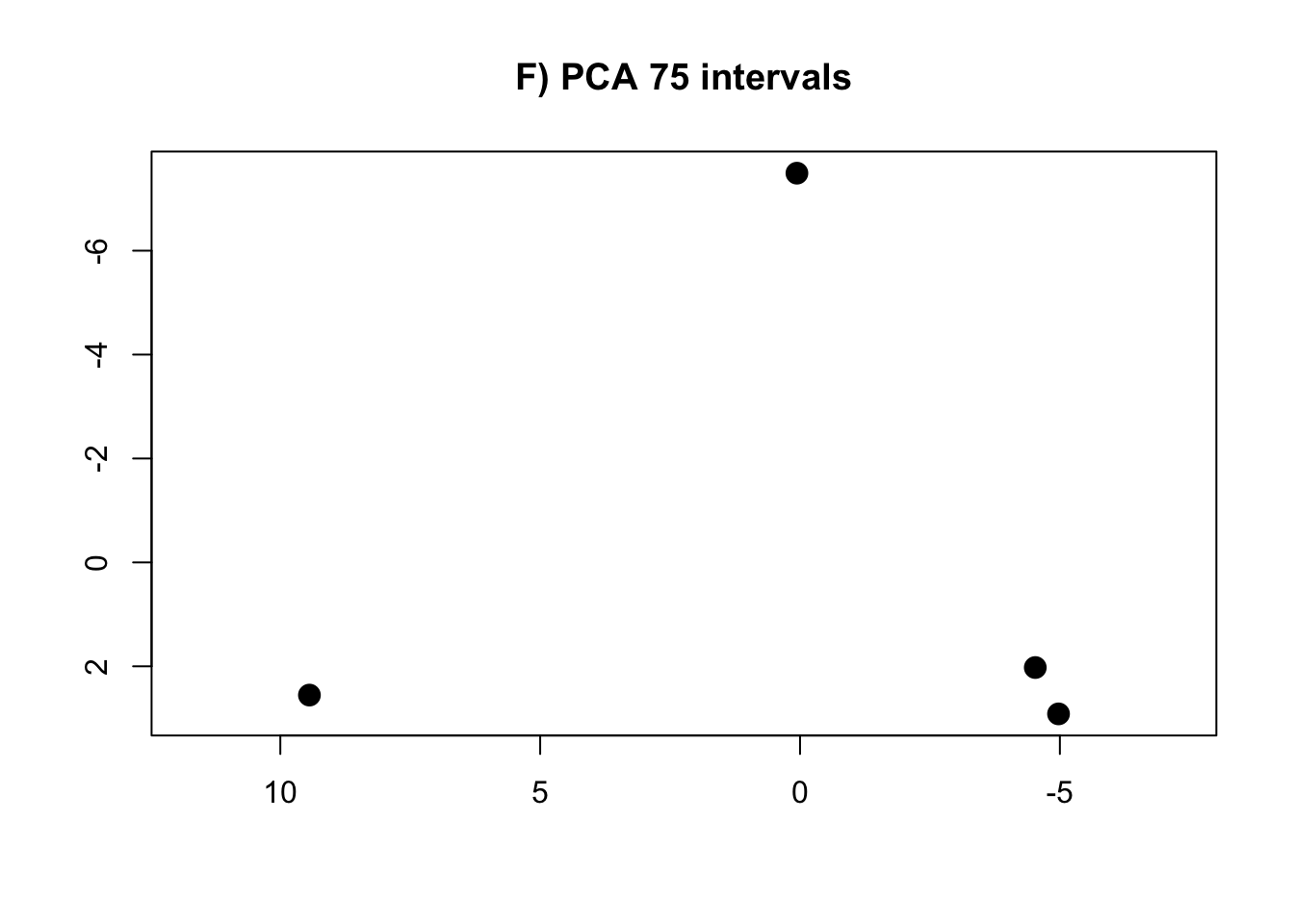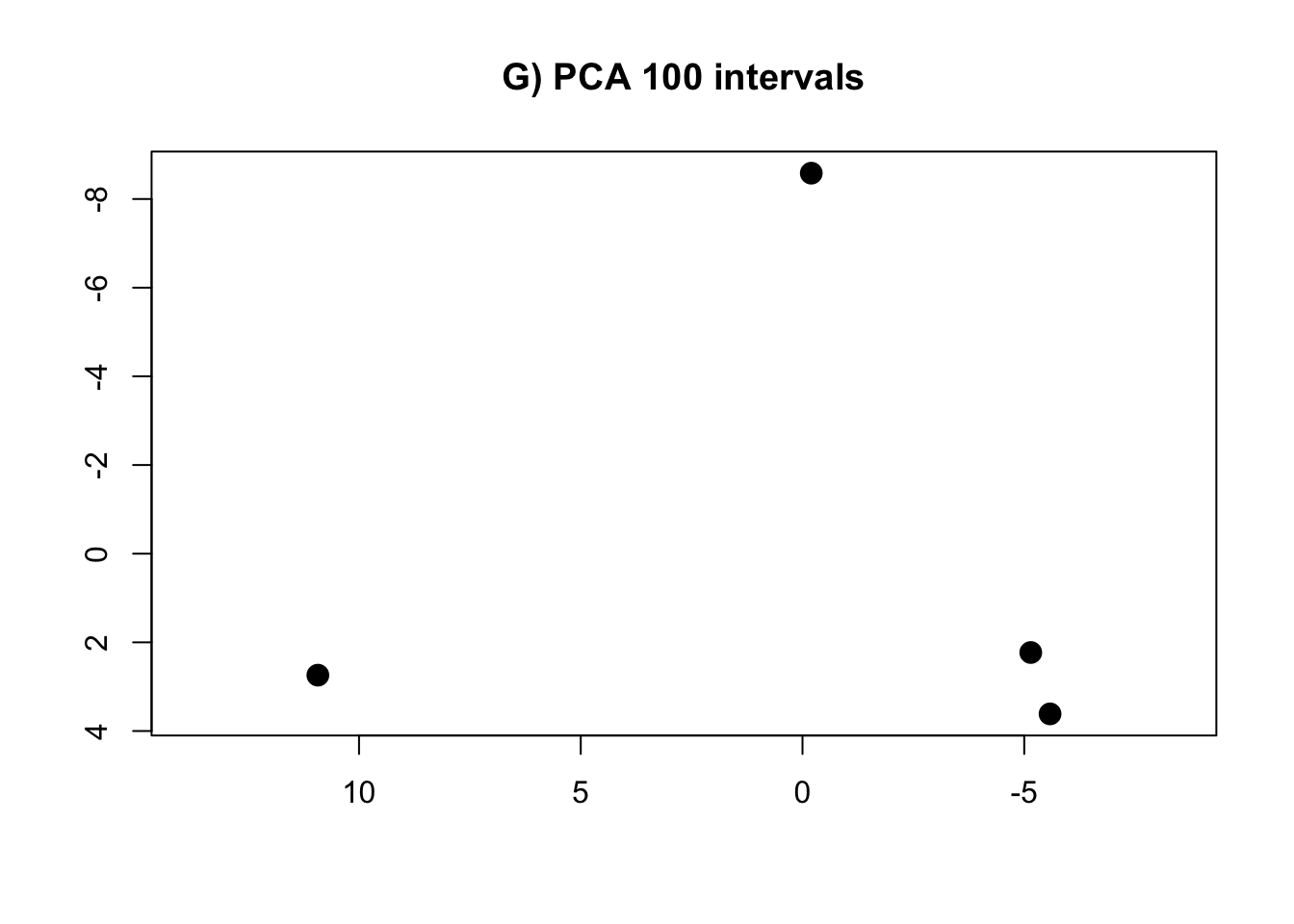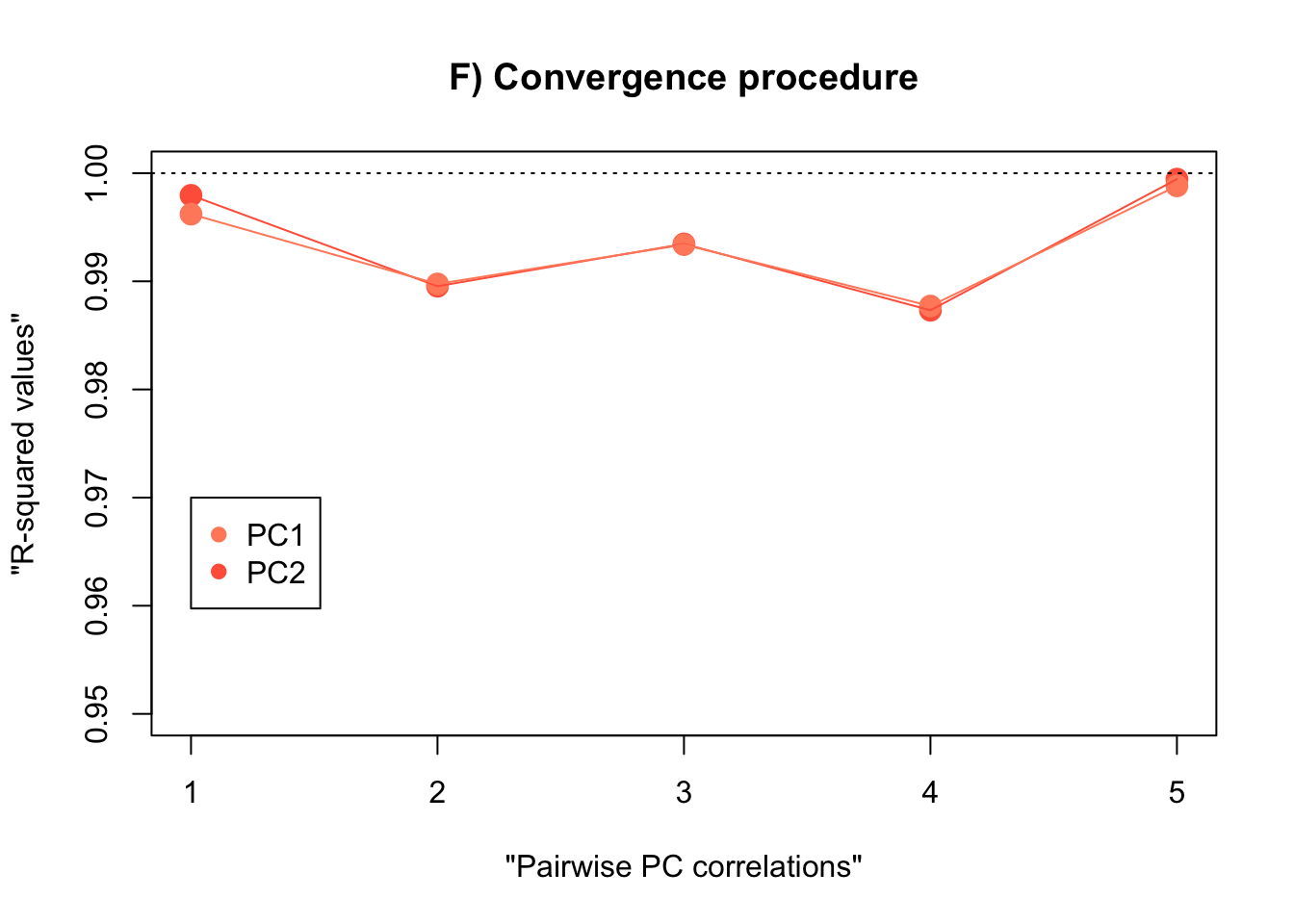Intervals' method tutorial Part2
Tutorial: How to use R to analyse data from FEA using the intervals’ method
Part2: Convergence procedure to estimate an appropiate number of intervals
This script corresponds to the convergence procedure used to estimate an appropiate number of interval variables. We have provided the different files for the example using different numbers of intervals (i.e., N= 5, 10, 15, 25, 50, 75 and 100). When analysing your own data, you will need to create your .csv files with different number of intervals by changing the value of the ‘NIntervals’ object used in the previous tutorial (also available as the “01-intervals-method-script” in figshare and then run the script for each one of the cases.
- Read all the files included in the convergence
#SCALE = T to use the correlation matrix
#SCALE = F to use the variance-covariance matrix
intervals.data.5 <- read.csv("matrix-of-intervals-5.csv", row.names = 1, header = TRUE, sep = ",")
intervals.data.10 <- read.csv("matrix-of-intervals-10.csv", row.names = 1, header = TRUE, sep = ",")
intervals.data.15 <- read.csv("matrix-of-intervals-15.csv", row.names = 1, header = TRUE, sep = ",")
intervals.data.25 <- read.csv("matrix-of-intervals-25.csv", row.names = 1, header = TRUE, sep = ",")
intervals.data.50 <- read.csv("matrix-of-intervals-50.csv", row.names = 1, header = TRUE, sep = ",")
intervals.data.75 <- read.csv("matrix-of-intervals-75.csv", row.names = 1, header = TRUE, sep = ",")
intervals.data.100 <- read.csv("matrix-of-intervals-100.csv", row.names = 1, header = TRUE, sep = ",")- Compute PCAs for each one of the cases
PCA.5 <- prcomp(intervals.data.5[, 1:5], scale = T)
PCA.10 <- prcomp(intervals.data.10[, 1:10], scale = T)
PCA.15 <- prcomp(intervals.data.15[, 1:15], scale = T)
PCA.25 <- prcomp(intervals.data.25[, 1:25], scale = T)
PCA.50 <- prcomp(intervals.data.50[, 1:50], scale = T)
PCA.75 <- prcomp(intervals.data.75[, 1:75], scale = T)
PCA.100 <- prcomp(intervals.data.100[, 1:100], scale = T)- Calculate te R-squared values for convergence procedure
PC1 convergence:
Rvalues.pc1 <- c(
summary(lm(PCA.10$x[, 1] ~ PCA.15$x[, 1]))$r.squared,
summary(lm(PCA.15$x[, 1] ~ PCA.25$x[, 1]))$r.squared,
summary(lm(PCA.25$x[, 1] ~ PCA.50$x[, 1]))$r.squared,
summary(lm(PCA.50$x[, 1] ~ PCA.75$x[, 1]))$r.squared,
summary(lm(PCA.75$x[, 1] ~ PCA.100$x[, 1]))$r.squared
)PC2 convergence:
Rvalues.pc2 <- c(
summary(lm(PCA.10$x[, 2] ~ PCA.15$x[, 2]))$r.squared,
summary(lm(PCA.15$x[, 2] ~ PCA.25$x[, 2]))$r.squared,
summary(lm(PCA.25$x[, 2] ~ PCA.50$x[, 2]))$r.squared,
summary(lm(PCA.50$x[, 2] ~ PCA.75$x[, 2]))$r.squared,
summary(lm(PCA.75$x[, 2] ~ PCA.100$x[, 2]))$r.squared
)Table with results: R-squared values
data.pca <- data.frame(Rvalues.pc1, Rvalues.pc2)
names(data.pca) <- c("PC1", "PC2")
rownames(data.pca) <- c("PCA 10 vs. PCA 15", "PCA 15 vs. PCA 25", "PCA 25 vs. PCA 50", "PCA 50 vs. PCA 75", "PCA 75 vs. PCA 100")
rm(intervals.data.5, intervals.data.10, intervals.data.15, intervals.data.25, intervals.data.50, intervals.data.75, intervals.data.100)- Plot the PCAs and the R-squared values







